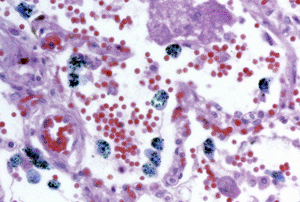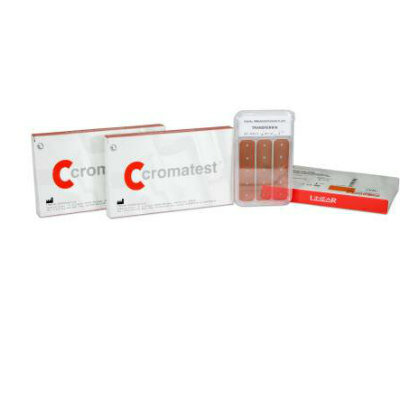Antibody-Linked Photosensitizer Eradicates Skin Tumors in Mouse Models
By LabMedica International staff writers
Posted on 25 Apr 2011
A paper described a potential new cancer treatment based on the specific destruction of tumor blood vessels by antibodies labeled with a photosensitive drug.Posted on 25 Apr 2011
Investigators at the University of Hull (United Kingdom) began by synthesizing a novel porphyrin-based photosensitizer suitable for conjugation to antibodies. The photosensitizer was designed to release molecules of the DNA-damaging reactive oxygen species upon exposure to light. The photosensitizer was chemically linked to antibodies directed at the cells comprising new blood vessels, which are required for tumor growth and expansion.

Image: Light micrograph of a section through a malignant melanoma, showing red blood cells (red), connective tissue and blood vessel walls (purple) and macrophages (blue) (Photo courtesy of Steve Gschmeissner / Science Photo Library).
The investigators tested the experimental drug (based on the L19 antibody) in two mouse cancer models. They reported in the April 12, 2011, issue of the British Journal of Cancer that L19 was capable of highly selective binding to tumor blood vessels and that its conjugation with the photosensitizer allowed selective disruption of tumor vasculature upon irradiation, leading to complete and long-lasting cancer eradication. Tumors disappeared and there was no regrowth during the following 100 days.
The investigators found that immune system "natural killer” cells were essential for complete tumor destruction. If natural killer-cell activity was inhibited, tumors were greatly reduced in size they but did not vanish completely.
"There are already drugs in clinical use which target tumor blood vessels, but these only inhibit growth rather than completely kill the tumor,” said contributing author Dr. Ross Boyle, professor of chemistry at Hull University. "By using this form of targeted photodynamic therapy, we were able to completely kill the tumor in our models. Though this is still a long way from being used on patients, it does hold exciting potential for the treatments of some of the most common skin cancers.”
Related Links:
University of Hull












